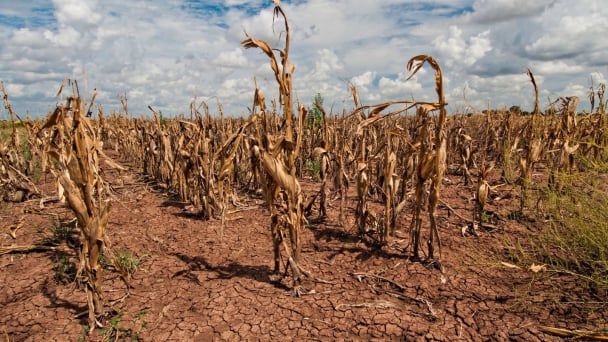May 29, 2025 | 07:04 GMT +7
May 29, 2025 | 07:04 GMT +7
Hotline: 0913.378.918
May 29, 2025 | 07:04 GMT +7
Hotline: 0913.378.918

The signing of MoU between Sustainable Agriculture Development Partnership with Pepsico and Care International on strengthening cooperation in inclusive and sustainable food production in Vietnam. Photo: Le Trung Quan.
On the sidelines of Prime Minister Pham Minh Chinh’s working trip to the US, the Ministry of Agriculture and Rural Development and the US-ASEAN Business Council co-held a Seminar to connect Vietnam- US agricultural businesses.
The seminar co-chaired by MARD Minister Le Minh Hoan and Senior Vice President for Policy at the US-ASEAN Business Council (USABC) Marc Mealy, took place on May 13 in Washington D.C.
It featured representatives of agencies, enterprises, and associations in the agriculture sector as well as banks and investment funds of the two countries. Besides, it also saw the attendance of major commodity associations in the US such as the U.S. Soybean Export Council, the US Grains Council, the National Pork Producers Council, and some multi-national agricultural corporations.
At the seminar, Mr. Nguyen Do Anh Tuan, Director of the Department of International Cooperation, Ministry of Agriculture and Rural Development, presented information on the priority directions within the Strategy for Sustainable Agriculture and Rural Development for the period 2021-2030, vision to 2050, which was approved by the Prime Minister on January 28, 2022.
Eco-agriculture - Modern countryside - Innovative farmers are the three pillars on which the Strategy was built. To achieve its goals, Vietnamese agriculture must transition from output-driven to economic thinking, build the multi-integrated value of agro-forestry-fishery products, link value chains of farming households with local enterprises and global corporations, create industry clusters, promote the systems of storage, preservation, processing, logistics, and distribution, and intensify reforms of creativity, digitalization, and green transformation of agriculture. The formation of a trustworthy partnership between the agricultural businesses of the two nations is critical to reaching these goals.
Both Vietnam and the United States possess agricultural strengths. Rather than competing and replacing, the agricultural products of the two nations are complementary to each other. In addition, the two governments have accompanied Vietnam and the US to open their market to achieve a double increase in agro-forestry-fishery export turnover, from USD 7.4 billion in 2015 to USD 17 billion in 2021.
While Vietnam excels in industrial tropical trees, tropical veggies, aquaculture goods, and timber and timber products. The United States is a powerhouse in animal feed materials, meat and seafood products, and biotechnology.
During the seminar, businesses from Vietnam and the United States discussed the strengths, demands, and opportunities for trade cooperation and investment. Exports and investments in the next generation of agricultural production, as well as models of sustainable, circular, and low-emission agriculture, receive special attention from American businesses. US companies wished to capitalize on prospects in agriculture markets not only in Vietnam but also throughout the ASEAN bloc with a 650 million populace, with Vietnam serving as a vital gateway for the US access to the latter.
At the seminar, Minister Le Minh Hoan stated that the United States was the largest import partner for Vietnam's agroforestry-fishery products. The minister directed the enterprises of the two nations to establish a trustworthy, stable, and long-term collaboration within the changing world’s landscape. This is the most favorable foundation for capitalizing on new opportunities generated by global events.
Vietnam's Ministry of Agriculture and Rural Development is willing to listen and collaborate with the two countries' businesses to address challenges and obstacles, thereby fostering favorable production, business, and investment conditions for international business communities and the US in particular.
The Minister is prepared to authorize the organization of forums for enterprises and localities to exchange information and exploit the finest new market prospects. He requested that the major commodities associations and significant businesses in the United States collaborate, inform, and instruct Vietnamese localities and enterprises on the requirements and standards of the US' agroforestry-fishery market.
Four Memorandum of Understanding agreements were concluded at the seminar:
1. MoU between Sustainable Agriculture Development Partnership with Pepsico and Care International on strengthening cooperation in inclusive and sustainable food production in Vietnam;
2. MoU between Bac Giang province and ERG group on promoting trade of local agricultural products;
3. MoU between Mom Thinh Phat Joint Stock Company and Grasslands Farms on promoting agricultural trade;
4. MoU between Nevist Vietnam International Import-Export Joint Stock Company and APG on promoting trade and investment in agriculture sector.
Translated by Linh Linh

(VAN) On May 27, La French Tech Vietnam (the French startup and innovation community in Vietnam) held the French Tech Summit Vietnam 2025.
/2025/05/27/4731-2-223159_980.jpg)
(VAN) No votive paper, no styrofoam, no plastic bags, no plastic bottles, and no single-use plastic trays are the key rules tourists should keep in mind when visiting Con Dao.

(VAN) In the fight against plastic pollution, Vietnam has been demonstrating a proactive, pioneering, and active role in addressing the greatest environmental challenge today.

(VAN) The WOAH guidelines provide a vital tool for risk chain analysis, covering the extraction, transportation, consumption, and handling of confiscated wildlife.

(VAN) World Environment Day 2025 is launched by the United Nations Environment Programme (UNEP) with the theme 'Beat Plastic Pollution'.

(VAN) As climate whiplash reshapes yields, experts say data-driven tools and targeted relief are critical to feed America.

(VAN) The alignment in goals and operational direction between the Vietnam Agriculture and Nature Newspaper and Shaanxi Daily opens up promising prospects for journalism and media cooperation.